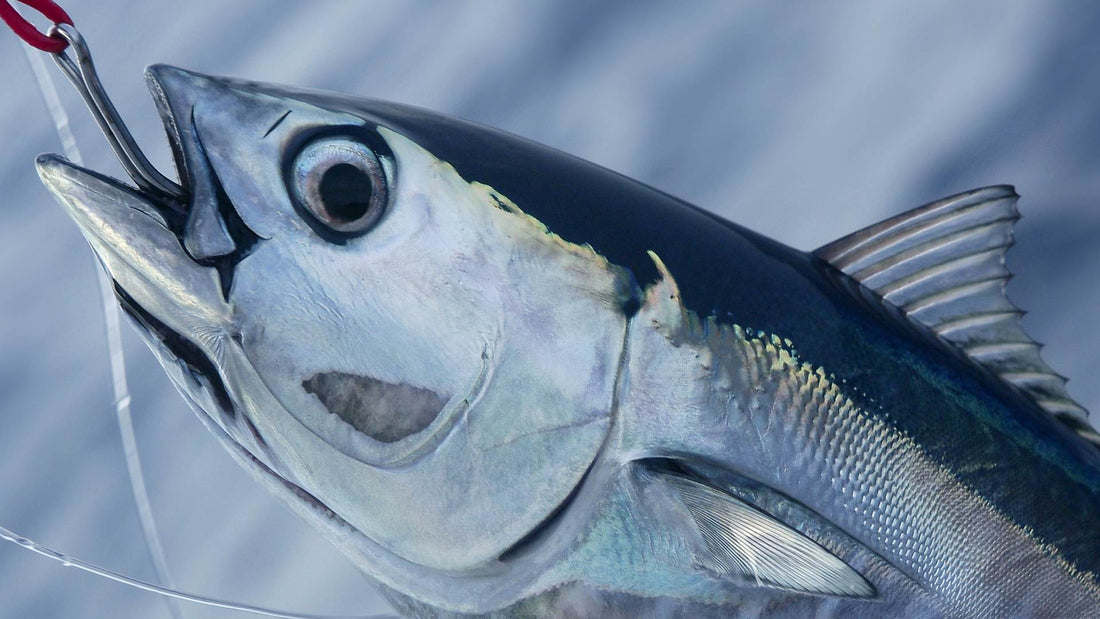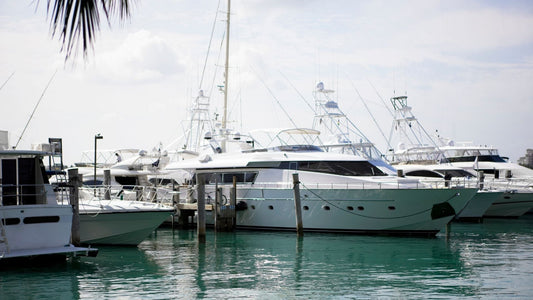
How to Catch Blackfin Tuna: A Complete Guide for Boaters and Anglers
Nicholas HeislerShare
Blackfin tuna might be the smallest member of the tuna family, but don't let their size fool you-these fast, hard-fighting fish offer plenty of excitement and culinary payoff for anglers. Whether you're an experienced offshore fisherman or just getting started targeting pelagics, learning how to catch blackfin tuna can add a thrilling new chapter to your fishing adventures.
In this complete guide, we'll break down the best seasons, tactics, gear, and bait for successfully landing blackfin tuna. From trolling techniques to vertical jigging, we'll cover everything you need to know to maximize your chances offshore.
Table of Contents
- When and Where to Find Blackfin Tuna
- Choosing the Right Gear for Blackfin Tuna
- Best Bait and Lures for Blackfin Tuna
- Proven Techniques to Catch Blackfin Tuna
- Ideal Boat Setup for Tuna Fishing
- Tips for Locating and Staying on Tuna
- Fighting and Landing Blackfin Tuna
- Cleaning and Storing Your Catch
- Conservation and Ethical Practices
- Final Thoughts: The Thrill of Chasing Blackfin Tuna
When and Where to Find Blackfin Tuna
Seasonal Patterns and Migrations
Blackfin tuna are commonly found in warm tropical and subtropical waters. They're most abundant from spring through fall, although in some areas like South Florida and the Keys, they can be caught year-round.
During spring and fall, blackfin often school up near the surface in large numbers, especially around temperature breaks, offshore humps, and current edges. In the summer, they tend to go deeper to find cooler water. Understanding these seasonal changes is key to finding them consistently.
Top Regions and Fishing Grounds
Blackfin tuna inhabit the Atlantic Ocean and Gulf of Mexico, with some of the most popular fishing locations including:
- Florida Keys - Especially around the Marathon Humps, Islamorada, and Key West
- Gulf of Mexico - Off the coast of Louisiana, Texas, and Mississippi
- East Coast of Florida - Particularly offshore from Jupiter, Palm Beach, and Miami
- Bahamas and Caribbean Islands - Productive waters near reef drop-offs and channel edges
Look for signs like diving birds, surface bait, and temperature breaks to zero in on blackfin schools. They tend to hang near offshore structures, such as wrecks, reefs, and deepwater humps, which attract baitfish.
Choosing the Right Gear for Blackfin Tuna
Rod and Reel Recommendations
Blackfin tuna can weigh anywhere from 5 to 30+ pounds, so your gear needs to be capable of handling fast runs and long fights.
- Spinning Gear: A 7-foot medium-heavy spinning rod paired with a 5000-8000 size reel is great for casting and jigging.
- Conventional Setups: For trolling or live bait drifting, a 6'6" heavy-action rod with a lever drag reel loaded with 30-50 lb test works well.
Line, Leader, and Terminal Tackle
- Main Line: Use 30-50 lb braid for strength and sensitivity.
- Leader: A 4-6 ft length of 30-50 lb fluorocarbon leader helps avoid spooking fish.
- Hooks: Use 3/0 to 5/0 circle or J-hooks, depending on bait size and rigging method.
Blackfin have good eyesight, especially in clear water, so using fluorocarbon leaders and downsizing when needed can make the difference.
Best Bait and Lures for Blackfin Tuna
Live and Dead Bait
Blackfin tuna are opportunistic feeders and will go after a variety of baitfish. Top natural baits include:
- Live Pilchards
- Threadfin Herring
- Sardines
- Ballyhoo
Live bait is particularly effective when chumming or slow-trolling. Use a stinger rig if sharks or kingfish are in the area.
Artificial Lures That Get Results
When live bait isn't available or you want to cover more ground, artificial lures shine. Things to try:
- Vertical Jigs - Drop them to the thermocline and work them with a sharp, erratic retrieve.
- Poppers - Great for when blackfin are busting on the surface.
- Trolling Feathers and Cedar Plugs - Proven producers at higher speeds.
Match your lure size to the bait in the area, and stick with natural colors like silver, blue, and white unless the water is stained.
Proven Techniques to Catch Blackfin Tuna
Trolling Tactics
Trolling is a reliable way to locate blackfin schools, especially over offshore humps or weedlines.
- Troll at 6-8 knots with feathers, jet heads, and small skirted ballyhoo
- Run a spread with multiple lines, using outriggers if available
- Use planers or downriggers to get lures deeper during warmer months
Live Chumming
Live chumming is incredibly effective for blackfin tuna and often creates a feeding frenzy.
- Load your livewell with pilchards or sardines
- Slowly toss handfuls behind the boat to attract tuna to the surface
- Cast free-lined live baits into the mix with minimal terminal tackle
This method is a favorite in the Keys and Gulf where bait is abundant.
Vertical Jigging and Popping
If tuna are deep, vertical jigging with metal jigs can be deadly. Drop to the thermocline or fish-marked depths and jig aggressively.
When you see surface activity, try casting poppers or stickbaits. Few things beat the sight of a blackfin smashing a topwater lure.
Ideal Boat Setup for Tuna Fishing
A well-prepared boat makes all the difference when targeting blackfin tuna.
- Electronics: GPS, sonar, and radar help find bait, fish, and structure
- Livewell: A high-capacity, aerated livewell is critical for keeping bait alive
- Tackle Organization: Keep jigs, lures, rigs, and lead ready to go
- Gaff and Cooler: Have a gaff or tuna stick ready and a well-iced fish box for preserving meat
Staying clean and organized on deck also makes it easier to handle double or triple hookups.
Tips for Locating and Staying on Tuna
- Bird Activity: Terns and frigatebirds often indicate feeding blackfin
- Bait Balls: Watch for showers of flying fish or ballyhoo
- Temperature Breaks and Rips: Tuna hang around edges where bait accumulates
- Network With Other Anglers: Use your VHF to communicate and find hot bites
A good set of binoculars helps spot distant bird activity, weedlines, or floating debris that can hold fish.
Fighting and Landing Blackfin Tuna
Once hooked, blackfin tuna put up a strong, sustained fight-especially on lighter gear.
- Set Your Drag Correctly: About 25-30% of your line strength
- Let Them Run: Avoid cranking against their runs-wait for them to tire
- Lift and Wind: Use the pump-and-reel technique for steady progress
- Gaff Cleanly: Gaff in the head or shoulder for a solid, humane landing
If you're in a hot bite, be ready with extra rods rigged and a second angler to back you up.
Cleaning and Storing Your Catch
Freshness is key when it comes to tuna.
- Bleed the Fish: Cut the gills or tail artery right after landing
- Ice Immediately: Pack ice in the body cavity and layer fish with crushed ice
- Fillet Cleanly: Use a sharp fillet knife and remove dark bloodlines
Blackfin tuna are delicious in sushi, poke bowls, or lightly seared steaks. Their mild flavor makes them versatile for many recipes.
Conservation and Ethical Practices
Blackfin tuna aren't as heavily regulated as bluefin, but responsible fishing helps preserve the population.
- Follow Local Regulations: Check bag limits and size requirements
- Avoid Over-Harvesting: Take only what you'll eat or share
- Handle Releases Properly: Use de-hookers and revive fish in the water when possible
- Minimize Waste: Use the trimmings for bait, chum, or even fish stock
Being a good steward of the fishery ensures blackfin tuna will continue to thrive for generations to come.
Final Thoughts: The Thrill of Chasing Blackfin Tuna
Catching blackfin tuna is an unforgettable experience-from the adrenaline of the hookup to the satisfaction of fresh tuna fillets. Whether you're trolling over deep humps or popping surface lures into a bait blitz, blackfin offer endless action for dedicated anglers.
So gear up, keep your bait lively, and trust your instincts on the water. With the right techniques and a bit of patience, you'll find yourself yelling "Fish on!" with a reel-screaming blackfin on the other end.
When it comes to keeping your fishing boat free from damaging saltwater, look to Captain's Fury salt remover soap and spray. Find everything you need to keep your vessel squeaky clean all season - always at the best prices.




